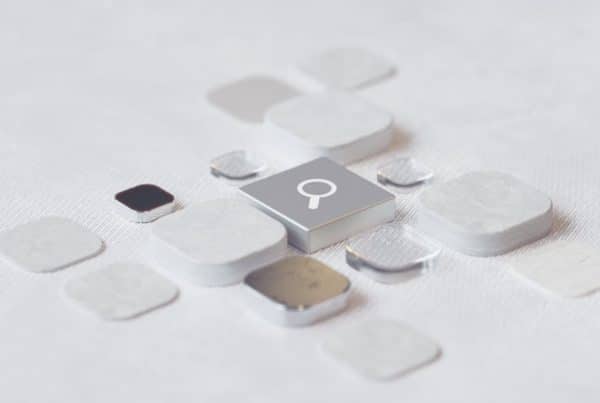Sooner or later, most business owners will realize the need for a website, and the web designer vs. web developer debate will begin. How do you discern which one you need to hire? It’s helpful to understand the difference between web designers and web developers to decide who to hire, when, and why.
The main difference between a web designer and a web developer is that a web designer curates the look and feel of your website, while a web developer codes the functional back-end components. So it’s okay to call web designers’ front-end developers.’ You’ll need both for a website that works well while looking great.
Defining Web Design and Web Development
What Is Web Design?
Web design encompasses the visual and user experience aspects of a website. This practice focuses on creating aesthetically appealing, user-friendly interfaces that engage and guide visitors. Web designers are sometimes called front-end developers since they specialize in the front end of a website.
Web designers work on:
1. Visual Elements
They decide on the layout, color schemes, imagery, and overall aesthetics to ensure a cohesive and attractive design. Visual elements should also achieve unity and harmony with your branding and website goals.
Someone gifted with graphic design skills can distinguish between an ordinary and an exceptional website. For example, a logo, custom illustrations, and icons contribute to a website’s unique identity.
2. User Experience (UX)
You’ll need a web designer to optimize your website’s structure and navigation. Simplicity and usability are two essential principles in UX design, ensuring visitors have a smooth journey through your website.
UX also entails creating intuitive menus and buttons and choosing where to place interactive elements.
3. Responsive Design
Google and other search engine operators favor websites optimized for mobile devices. Responsive design ensures your website works seamlessly on various devices, like smartphones, desktop PCs, and tablets.
Website designers visualize how the site should look and feel across different devices. They should also be familiar with coding principles to ensure your website runs seamlessly on all platforms.
4. Prototyping
Tools like Adobe XD, Sketch, or Figma help create interactive prototypes demonstrating how the website will look and function.
It entails wireframing or creating a visual model of the website’s layout and navigation structure. Prototyping can also involve building rough versions of webpages to ensure various components, such as interactive elements, function correctly.
The Key Responsibilities of a Web Designer
Web designers have several primary responsibilities, including:
- Creating the website’s layout, arranging content elements, and ensuring a visually pleasing composition.
- Choosing appropriate color palettes that align with the brand and evoke the desired emotions.
- Selecting fonts, font sizes, and styles to enhance readability and aesthetics.
- Ensuring all design elements, such as icons and graphics, align with the website’s theme and purpose.
- Using tools like Adobe XD, Sketch, or Figma to create interactive prototypes for client approval.
What Is Web Development?
Web development involves building the functionality and structure of a website. Developers use programming languages and technologies to turn the designer’s vision into a functional website.
You can also call them back-end developers. Critical aspects of web development include:
1. Front-End Development
Front-end developers use HTML, CSS, and JavaScript to create the client-side interface that users interact with directly.
2. Back-End Development
Back-end developers work on the server side, managing database server logic and ensuring the website’s functionality, security, and performance.
3. Database Management
The back-end developer’s job is to define and maintain the database structure, ensuring that data is properly stored and easily retrievable when required. Developers use technologies like SQL or NoSQL to manage data and user interactions.
4. Performance Optimization
They optimize code and implement strategies to improve website speed and scalability.
The Key Responsibilities of a Web Developer
Web developers focus on functionality, performance, and the technical aspects of a website, working in collaboration with web designers. They are crucial in bringing a web designer’s vision to life through coding and programming.
Web developer’s core responsibilities include:
- Writing code in HTML, CSS, and some JavaScript to implement the website’s design on the user’s browser.
- Building the server-side functionality, managing databases, and ensuring the website’s smooth operation.
- Utilizing programming languages such as JavaScript, Python, PHP, or Ruby, depending on project requirements.
- Connecting the front-end and back-end components to create a cohesive, functional website.
Collaboration between Web Designers and Web Developers
Your web designers and web developers must collaborate to create a successful website. Their skills complement each other.
Designers provide the aesthetics and user experience, while developers bring functionality and interactivity to life.
Effective teamwork ensures a harmonious balance between aesthetics and function, yielding any appealing, fast, and effective website.
When to Hire a Web Designer
Hiring a web designer is essential when:
- You need a visually appealing website that focuses on aesthetics and user experience.
- Branding, visual identity, and user engagement are critical to your online presence.
- You want to create an attractive design that resonates with your target audience.
When to Hire a Web Developer
Hiring a web developer is crucial when:
- You require complex website functionality, databases, or server-side operations.
- Performance, security, and scalability are top priorities.
- You need to create custom web applications or implement intricate back-end systems.
The Hybrid Role: Full-Stack Developers
Full-stack developers are proficient in both web design and web development tasks. You might consider hiring a full-stack developer when:
- You have a small team or budget constraints and need a versatile expert at handling design and development.
- You want a single point of contact for the entire web project, streamlining communication and decision-making processes.
- You need someone who can effectively bridge the design-development gap and produce a cohesive product from start to finish.
Verdict on Web Developer vs. Web Designer
The roles of web designers and developers are distinct but closely intertwined. It helps to appreciate the varying demands of these two roles to make informed decisions when hiring for your project.
Here are the different types of web design if you need more information on the subject. Remember, design and development should go hand-in-hand for an effective website; there’s no use in having beautiful visuals with no functionality.




